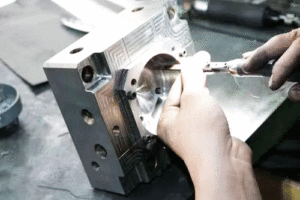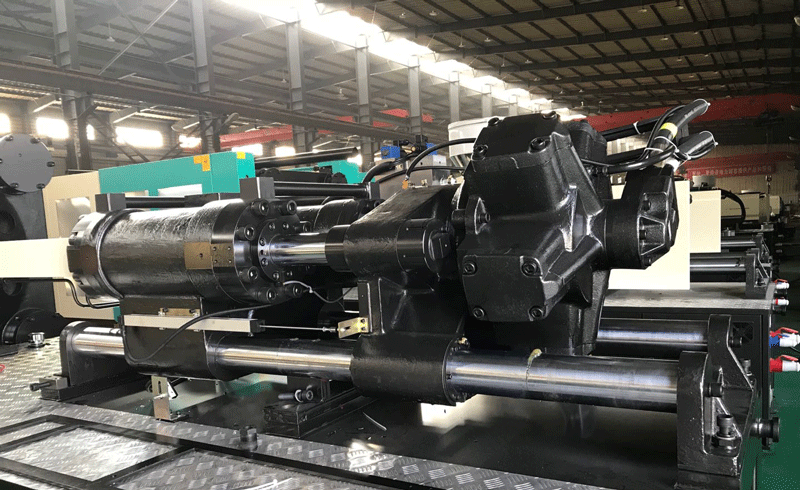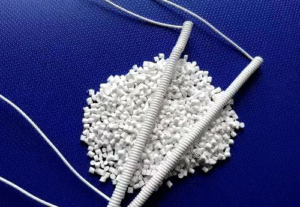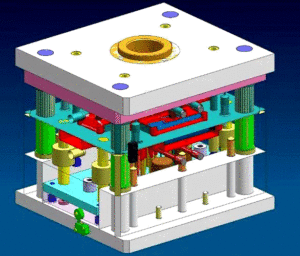
Polishing Treatment for Plastic Molds
Polishing Treatment for Plastic Molds With the widespread application of plastic products, such as daily-use items and beverage packaging containers, there is often a requirement
The injection speed is a key parameter of injection molding for its close relationship with product quality. Determine the beginning, middle, and end of the injection speed segment. Moreover, realize a smooth transition from one set point to another. These can ensure a stable melt surface speed producing the desired molecule and the smallest internal stress.
The basis for setting the speed segmentation must consider the geometry of the mold, other flow restrictions and unstable factors.
The setting of speed must have a knowledge of the injection molding process and material. Otherwise, it will be difficult to control the product quality. Because it’s difficult to directly measure the melt flow rate. It can be calculated indirectly by measuring the forward speed of screw or cavity pressure (make sure that the check valve does not leak).
Material properties are very important, because polymers may degrade for different stresses. Increasing the molding temperature may lead to severe oxidation and degradation of chemical structure. But at the same time, the degradation caused by shear becomes smaller. That’s because high temperature reduces the viscosity of the material and shear stress. Undoubtedly, the multi-stage glue injection speed is very helpful for forming heat-sensitive materials such as PC, POM, UPVC and their blending ingredients.
Adjusting the injection speed can help eliminate defects caused by the slowing of the flow at the water inlet. When the melt reaches the water inlet through the nozzle and the runner, the surface of the melt front may have cooled and solidified. Or the melt stagnated due to the sudden narrowing of the runner, until enough pressure is established to push the melt through the inlet. And this will cause the pressure through the inlet to peak.
High pressure will damage the material and cause surface defects such as flow marks and scorching of the water inlet. But we can overcome this situation by decelerating just before the water inlet. Such deceleration can prevent excessive shearing of the water inlet. Then increase the rate of fire to the original value. Because it is very difficult to precisely control the rate of fire to slow down at the inlet. It is a better plan to slow down at the end of the runner.
We can avoid or reduce defects like flash, scorch, trapped air, etc. by controlling the injection speed at the end. The deceleration at the end of filling can prevent overfilling of the cavity. And it can also avoid flash and reduce residual stress. We can also avoid the air trapping caused by poor exhaust or filling problems at the end of the mold flow path by reducing the exhaust speed, especially the speed at the end of the injection.
The short shot is caused by the slow speed at the water inlet or the local flow obstruction resulting from the solidification of the melt. We can slove this problem by increasing the injection speed just after passing the water inlet or local flow obstruction. Defects like flow marks, scorching of the water inlet, molecular rupture, delamination, and flaking occur on the heat-sensitive material for excessive shear when passing through the water inlet.

Smooth parts depend on injection speed. And glass fiber filler materials are particularly sensitive, especially nylon. Dark spots (wavy lines) result from unstable flow caused by viscosity changes. While the distorted flow can cause wavy lines or uneven fog. What kind of defects will be produced depends on the degree of instability of the flow.
When the melt passes through the water inlet, high-speed injection will cause high shear. Besides, the heat-sensitive plastic will be burnt. This burnt material will pass through the cavity and reach the flow front, appearing on the surface of the part.
To prevent injection patterns, we should set the injection speed to fill the runner area quickly and then pass through the water inlet slowly. Finding this speed conversion point is the essence of the problem. If it is too early, the filling time will increase excessively. But if it is too late, excessive flow inertia will cause the jetting. The lower the melt viscosity and the higher the barrel temperature, the more obvious the tendency of this pattern. Since the small water inlet requires high-speed and high-pressure injection, it is also an important factor leading to flow defects.
More effective pressure transmission and smaller pressure drop can improve the situation of shrinkage. Low mold temperature and overly slow screw advancement speed greatly shorten the flow length. And it must be compensated by high shooting speed. High-speed flow will reduce heat loss. Due to frictional heat generated by high shear heat, it will increase the melt temperature and slow down the thickening speed of the outer layer of the part. The cavity intersection must have enough thickness to avoid too much pressure drop, otherwise shrinkage will occur.
In short, we can slove most injection molding defects by adjusting the injection speed. So the skill to adjust the injection process is to set the injection speed and its segmentation reasonably.

Polishing Treatment for Plastic Molds With the widespread application of plastic products, such as daily-use items and beverage packaging containers, there is often a requirement

Injection Molding Techniques for TPE and TPR Injection Molding Techniques for TPE and TPR 1. Dry the TPE and TPR material before injection molding It

Winter Maintenance Measures for Injection Molding Machines As winter approaches and temperatures gradually drop, a cold chill envelops the earth. While ensuring personal warmth, it

Assessment Regulations for Mold Trial Exceeding 3 Times Assessment Regulations for Mold Trial 1. Purpose The purpose of this regulation is to standardize the work of